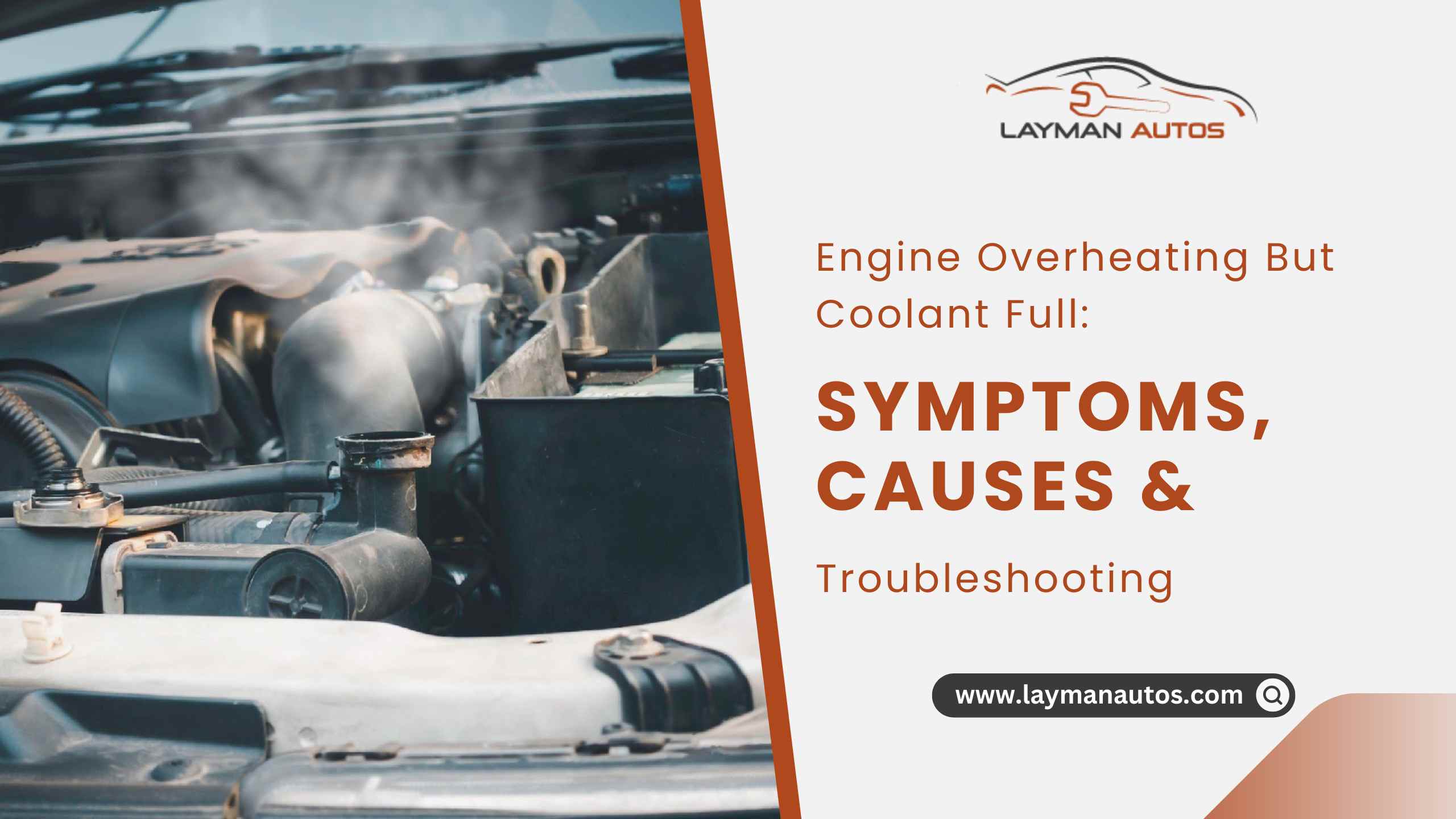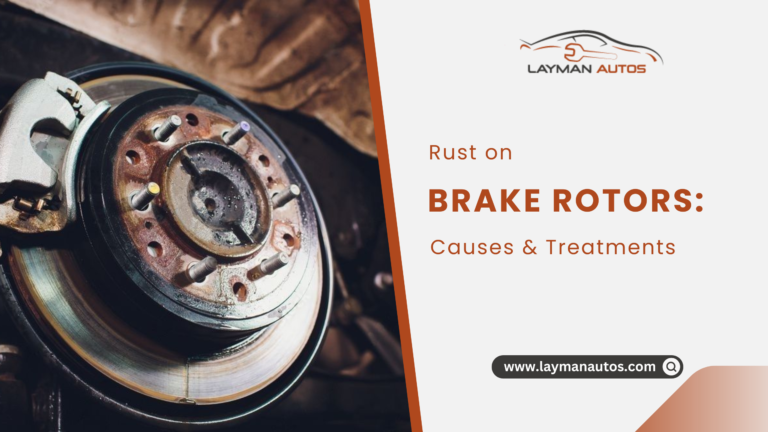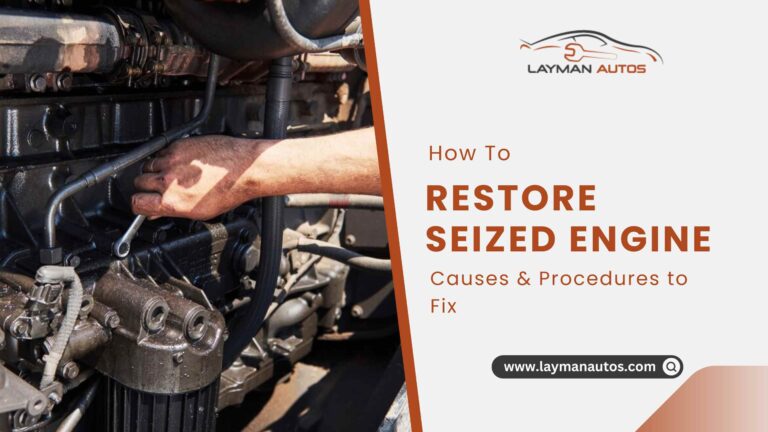Engine Overheating But Coolant Full – Understanding the Causes
Too much engine heat is never a good indication. Unfortunately, ignoring it might result in expensive repairs and ultimately leave you without a car. Those who wonder, “Why is my Engine Overheating But Coolant Full?” can find the answer here
Lack of coolant is the major reason for an overheated engine. On the other hand, if your automobile is overheating while having a full coolant tank, the problem may be more serious. Water pump failure, radiator obstruction, a malfunctioning thermostat, or a blown head gasket are further possibilities.
Thankfully, all of the information you require to deal with an overheated automobile is included in this brief article. First, we’ll take a look at the most obvious warning signs that it’s overheating. We’ll investigate possible causes after that’s done. Come on, let’s get into the manual straight now!
What Are The Symptoms Of Engine Damage From Overheating?
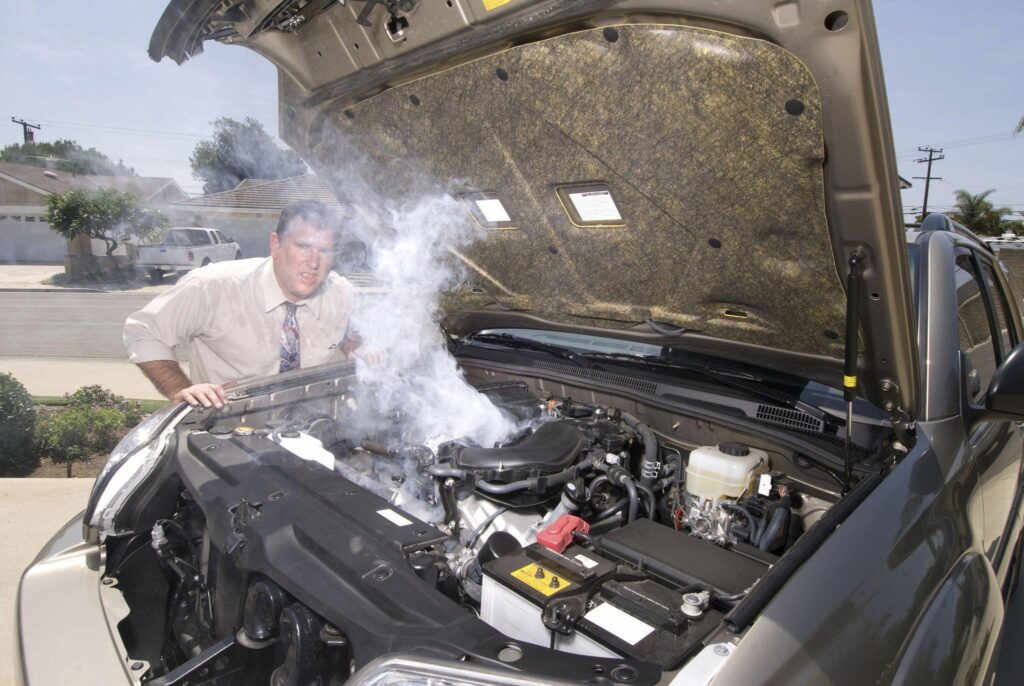
1. The Temperature Warning Indicator
The good news about a heating engine is that it will probably turn on the temperature gauge. You should consider yourself lucky if this is the first time you’ve noticed your automobile overheating. This is an ideal opportunity to address the issue before it escalates and generates significant costs.
There should be some sort of gauge if you don’t have a dedicated temperature indicator. If it begins to edge closer to the red zone, you should probably investigate.
2. Your Engine Makes A Ticking or Thumping Noise
In order for your engine to run smoothly, it must achieve a certain operating temperature. This is why your car has a thermostat—to prevent coolant from flowing until the engine has warmed up.
However, if your car overheats, the coolant already inside might begin to boil. There might be a pounding noise when the thermostat opens and the cold coolant combines with the heat.
Ticking sounds indicate that the engine oil is getting too heated. Overheating oil causes it to become less viscous. As a result, it will be less efficient at lubricating, which might cause a ticking noise.
3. You See A Pool Of Coolant On The Ground
The purpose of coolant is to maintain an optimal operating temperature in your car. However, if there is a leak, the fluid might collect under the vehicle, causing the engine to run dry and overheat.
To stop the engine from overheating, you might try adding additional coolant, but eventually, you’ll need to find the leak. Something more serious is going on if the coolant reservoir is full yet the car is still overheating.
4. Steam is Emanating From the Engine Bay
Thankfully, the same holds true for your engine, as steam is always a telltale sign of heat. If steam begins to spew from below the hood, stop the vehicle as soon as it is safe to do so. If you see steam coming from your engine, the coolant has likely boiled.
5. The Hood Is Sweltering
A warm sensation from the hood is normal, especially after driving for a time with the engine running. When your hand hurts after ten seconds of resting on the hood, though, it’s too much. After a safe distance, turn off the car’s engine to let it cool down. There’s probably something you should look into if it keeps happening.
6. The Engine Has Lost Some of Its Power
In extreme cases of overheating, engine expansion can reduce performance. To put it another way, this will appear as a loss of power, making acceleration difficult whenever the accelerator is pressed.
Keep an eye out for any of the aforementioned indications. After reading this, you should be able to recognize the warning signals of an overheated engine. Let’s take a look at the most typical reasons cars overheat.
Causes of Engine Overheating
As summer approaches, so are higher temperatures and the possibility that your automobile could overheat. After all, you’ll be at a severe disadvantage if you try to drive a car that has been sitting in the sun for 90 to 100 degrees with the engine switched off.
However, there are many things besides the weather that may cause your car to overheat, and fortunately, most of them are avoidable if you know what to watch out for. If you plan on taking a road trip this summer, keep an eye on the “check engine” light and get your car serviced thoroughly before you go. You should avoid breaking down on the side of the road with your engine spewing steam.
Here are a few causes of engine overheating:
1. Problems with the engine’s coolant.
Its name pretty much sums up what coolant does: it prevents overheating by maintaining a low internal temperature in your vehicle. Fortunately, if you find yourself low, it may be as simple as putting in an extra order.
A leak is less likely if your coolant level is normal but your car is still overheating. Instead, there might indicate a problem with circulation. There are a number of potential causes, such as a broken water pump, a clogged radiator, a malfunctioning thermostat, or a clogged heater core.
Blocked Coolant Tubes
Even if the thermostat is functioning normally, there are still a number of coolant-related problems that might cause your engine to overheat. One possible cause is that the engine’s coolant tubes are blocked by rust or other debris. Most coolant loss occurs because of a leak. If you see any puddles around your car, this might be a sign of a leak, so get a new washer fluid seal and get your car checked out.
Locate a Leak in an Engine
It might be challenging to locate a leak in an engine since it can happen anywhere. Do not attempt to fix a leak in your home’s air conditioning system. It’s easy to overlook the actual source of a leak in your cooling system, despite the fact that its efficient operation is crucial.
Improper Dilution of the Coolant
A second factor that might cause your engine to overheat is the improper dilution of the coolant. Additionally, it’s possible that you’re misusing your engine’s coolant. The correct coolant for your car can only be determined with the aid of your owner’s handbook or a qualified mechanic.
2. The Water Pump Is Broken
Since it regulates the circulation of coolant throughout the whole system, the water punch in your engine is perhaps the most crucial component of your vehicle’s cooling setup. Your water pump may malfunction due to instability, internal erosion, or contamination of the system.
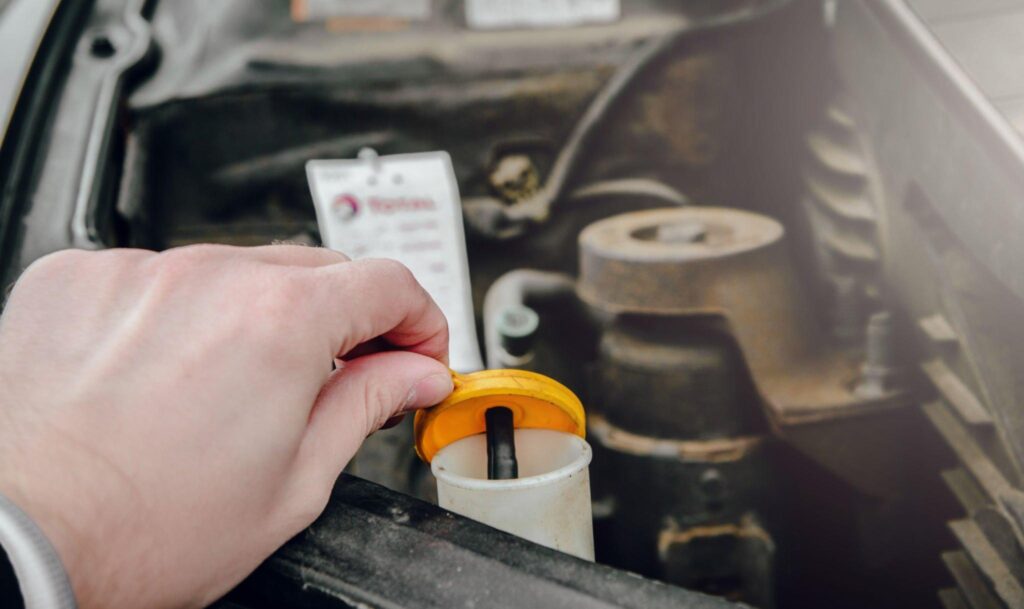
If your engine overheats, the water pump is the first thing you should examine since you can’t restart the engine if it isn’t operating.
3. The Radiator Is Clogged
The radiator acts as a heat sink, removing heat from the coolant as it runs through. The coolant may be unable to circulate if it is broken or if anything is stuck in it. The radiator is located towards the front of the car, making it easy to check from the outside. In the event that rubbish is spotted, it must be cleared away. However, if it becomes broken or has a faulty radiator cap, replacing it is probably your only choice.
4. Thermostat Troubles
The amount of coolant that flows through the system is controlled by the thermostat. There will be errors if it is unable to move. Obviously, your engine will overheat if this part isn’t functioning properly
Broken Thermostat Causing Engine Overheating
A broken thermostat is a typical cause of engine overheating, but the thermostat in your car works differently from the one in your home. Thermostats monitor inside temperatures and activate either the heating or cooling system, depending on the homeowner’s preferences.
Even if you have to wait for a repairman, you will take action if the temperature in your home rises over a comfortable level, whether that means opening windows, turning on fans, or something else entirely.
The valve Opens and the Coolant Flows
However, there’s little you can do if your engine overheats. That’s because the thermostat is a valve that regulates the circulation of the engine’s coolant. The valve opens and coolant flows through when the engine heats up, allowing the temperature to be lowered; a closed valve prevents coolant from flowing through a cold engine, allowing it to heat up more quickly.
The thermostat might be faulty and trapped in the closed position, allowing the engine to heat up but continue running. The coolant is stuck within the engine no matter how hot it gets. This is a serious issue that can quickly lead to engine overheating.
5. The heater’s core is obstructed
If your automobile is overheating despite a full coolant tank, the problem is generally caused by the fluid being unable to circulate freely. This is the result of a blocked heater core.
When it’s chilly outside, the heater core is in charge of producing heated air to circulate within the vehicle. Your vehicle might overheat if the coolant doesn’t flow properly, which can happen if the temperature outside is low.
6. The Head Gasket Has Blown
It hurt to bring up the possibility that the head gasket had blown, and we felt bad about it. The term “head gasket” refers to a seal between the engine block and the cylinder head. The seal might wear out sooner if the engine becomes too hot. Because of this, coolant can escape as it moves between the spaces.
However, there is a significant cost associated with obtaining this component. This is made even more costly by the fact that vehicle repair firms normally charge between $50 and $100 each hour.
The good news is that this is the final warning indication that your engine is overheating. To fix it at this stage would be quite expensive.
Why Is Your Car Overheating?
Stop wondering why and start planning your next move. If you ignore an overheated engine, you’ll almost certainly end up having to pay for expensive repairs. Instead, if you have any of the aforementioned problems, you should get a professional diagnosis as soon as possible to save further hassle and expense.
When An Engine Gets Too Hot, You Do This
If your car’s engine ever overheats while you’re driving, you shouldn’t risk damaging it by trying to make it to the next service station. Stop the vehicle and see if you can fix it with some simple adjustments before continuing.
In the event that your car’s engine overheats, the first thing you should do is check the trunk for additional water and coolant and add those. It’s possible that you need to add more coolant.
If your car’s engine ever overheats, don’t make the mistake of putting cold water into the radiator. Adding water to a hot radiator might cause cracks or other damage, therefore it’s best to let the radiator cool down first.
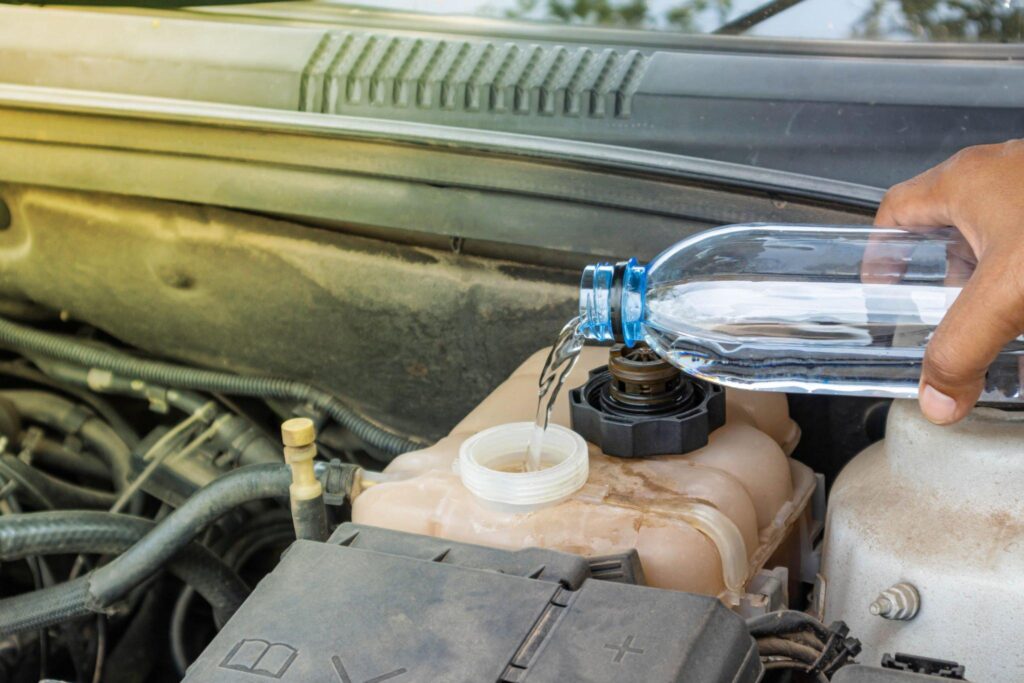
If it doesn’t work, try cranking up the heat instead. Even though it goes against common sense, cranking up the thermostat can actually assist move the hot air away from the car’s engine. If you want to check on the engine’s health after driving a few kilometres, you can switch it off.
Regular Adjustments After Engine Overheating
If you continue to drive your hot car, the engine block’s interior components will eventually deform, causing expensive repairs. The aluminum cylinders, engine head gasket, and water pump are all susceptible to warping from engine overheating.
Overheating an engine may cause a variety of problems, the most common of which is a broken head gasket ($1500 on average to replace), warped cylinders ($500 on average to replace), and a faulty water pump ($350-$700).
Blown head gaskets and warped engine parts are expensive to replace, and the manufacturer will not pay for the labor if the problem is caused by improper upkeep.
Engine Overheating Troubleshooting
The following are quick measures that may be taken to reduce the severity of engine damage caused by overheating.
Switch to High Heat and Turn Off the Air Conditioner
You should switch to high heat and turn off the air conditioner. Activate the heater’s defroster and crank up the fan speed. Put the windows down to assist with the heat. To safely exit the road if you’re stuck in traffic, put your vehicle in neutral or park in a nearby safe area.
Go Off the Road
The best way to go off the road and stop safely is to put your car in neutral or the lowest gear and use as little acceleration as possible. If your car won’t start, either call a tow truck or let it cool down completely before checking the fluids.
On the Cooling System, Turn on the Heater
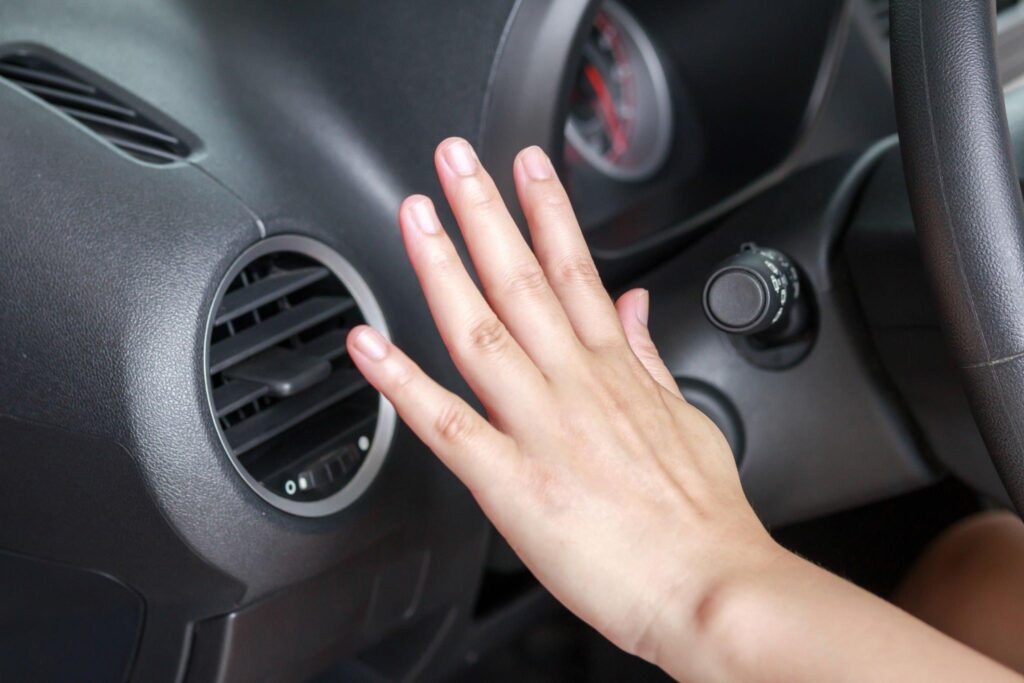
If your automobile starts to overheat, you should strive to pull as much heat as possible from the engine block to reduce the damage. To transfer some of the heat from the heater core into the cab, you may turn on the heater, which is part of the cooling system. Remove as much heat as possible from the coolant in your cooling system by using the defroster. Sometimes cooling system leakage may cause an issue to the car’s engine.
Shift Into the Lowest Gear Available
Even while it may be unpleasant to wait in a hot automobile during the summer, it’s preferable to having to spend thousands of dollars fixing your vehicle once its engine completely seizes up. You may reduce the amount of heat you add to an overheated engine by shifting into the lowest gear available and reducing your acceleration.
If your automobile begins to overheat while you’re driving, pull over as soon as feasible. It’s up to you to decide where to stop and how far you want to go, but you should select a safe area because you’ll probably stay there for a while. Keep in mind that a minor increase in mileage might mean the failure of an expensive engine part. Try to avoid more injury and damage to your vehicle by using your best judgment.
Park in a Well-lit Place
Take the next exit off the highway and stop at a rest area or petrol station if you need to. Try to park in a well-lit place if you must drive at night. As soon as you can, please turn off your vehicle. While at a standstill, your engine will still use gasoline and get hotter.
Wait for Your Car to Cool Down Enough
You may either wait for your car to cool down enough to open the hood and check the fluids, or you can contact a tow truck. Sometimes all you need is to add coolant to the engine, and if you haven’t done it in a while, the problem can be solved quickly.
If this seems like the case, park the car somewhere safe and hitch a ride to the auto parts store or big box store where you can pick up some engine coolant. Find out what kind of coolant you should use.
When you return to your vehicle, it should be entirely cold, but you should still check the temperatures of any fluid compartments before you do so.
If you regularly check and refill your car’s fluids, you likely need a tow truck for a more serious problem than a leaking radiator or a flat tyre. Keep in mind that a car that is overheating is not safe to drive. Arrange to have your vehicle towed to your residence or the garage of a local mechanic you know and trust.
Frequently Asked Questions
What to do if engine coolant over temperature?
- Fire up the furnace.
- Stop the car.
- Settle in.
- Incorporate cooling agents.
- Get in your car and head to the nearest gas station.
How far can you drive an overheating car?
About a quarter of a mile is the farthest you should travel in an overheated automobile before you risk permanent engine damage. While it is possible to drive up to 20 miles with an overheated engine, it is not advised.
How to diagnose an overheating engine?
Step 1: Inspect the radiator cap and coolant level.
Step 2: is to check for air leaks.
Step 3: Check to see if the radiator has fans.
Step 4: Test the fan motor.
Step 5: Verify the serpentine belt as the fifth step.

